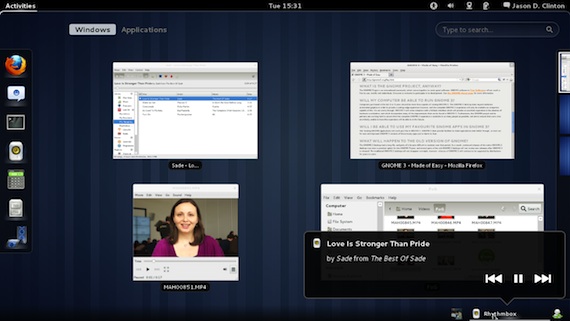Fedora 15 Adds Cloud Deployment Builder, GNOME 3 Desktop, Robotics Suite
The Fedora Project has released an update to its flagship Linux-based operating system, Fedora 15, incorporating a fully revamped desktop environment, new robotics development tools, and an appliance creator for building virtual machines and disk images for desktop and cloud deployment.
Fedora is a widely distributed free and open source desktop operating system suite that includes a core OS (based on the Linux kernel) and a comprehensive suite of open source components, including productivity software and a GNOME graphical user interface. Fedora is sponsored by open source developer Red Hat.
Version 15, which formally launched last week, rolls in a range of major enhancements for end users, admins, and developers alike.
New and GNU: Environments and Open Source Productivity Software
On the end user front, it includes new versions of its primary and alternative desktop operating environment, including GNOME 3, KDE Plasma Workspaces 4.6, Xfce 4.8, and Sugar Learning Platform 0.92.
GNOME 3 ("GNU Network Object Model Environment 3") is the new default environment for Fedora and includes a refined user interface, a redesigned file manager, and enhancements focused on usability. Two of the alternative desktop environments included with Fedora 15, KDE Plasma Workspaces and Xfce, have also been recently updated with new releases in in 2011.
The third alternative, Sugar 0.92, is the latest release of the computing environment originally developed for XO-1 netbook from One Laptop per Child (OLPC) and designed specifically for education. Unlike GUIs, Sugar does not adopt a desktop/files/application metaphor but, rather, focuses on activities, discovery, and collaboration, with built-in tools for simplified file sharing, communications tools, and a portfolio assessment system.

GNOME 3, the default desktop environment in Fedora 15, includes window management features for creating custom workspaces.. |
In addition to the updated computing environments, new features in Fedora 15 for end users include:
- Improved power management, including a daemon that dynamically balances performance and power consumption, as well as bug fixes and profile updates designed to improve efficiency;
- Integrated LibreOffice suite, which replaces OpenOfice.org as the default office suite (with features similar to those found in Microsoft Office, such as presentations, word processing, and spreadsheets);
- The Firefox 4 browser;
- Improved image compression;
- An intermediate implementation of the filesystem called Btrfs, which is slated eventually to become Fedora's default filesystem; and
- Troubleshooting and reporting tools.
Fedora Does the Robot
New developer tools in Fedora 15 include an open source development suite designed to provide out-of-the-box functionality for robotics programming and simulation. It includes two multi-robot simulators, one of them a RoboCup Soccer simulator; multi-platform application framework; and robotics server with drivers for more than 130 devices.
Also on the development front, version 15 bundles updated versions of Maven (3.0), Python (3.2), OCami 3.12, Rails 3.0.5, GCC 4.6, and GDB 7.3.
Fedora Behind the Firewall, out in the Cloud
For virtualized environments and cloud deployments, Fedora now includes the BoxGrinder utility suite. BoxGrinder, the first JBoss Community project to be included with Fedora, creates complete disk images or appliances ready for deployment on a variety of platforms, including KVM, Citrix Xen, VMware, and Amazon EC2.
Also on the virtualization front, support for Spice has been added to the Virt Manager, providing communications with virtualized desktops without using the command line.
Fedora's firewall has been updated to support on-the-fly settings adjustments without restarting the firewall.
Other features new in version 15 include:
- The addition of the Tryton enterprise resource planning system (ERP), with business modules that include accounting and invoicing, inventory management, and purchasing management;
- A new system and session manager called systemd, which replaces SysVinit and Upstart; and
- An RPM update to version 4.9.
Fedora 15 is freely available now. An expanded list of new features can be found on the Fedora 15 feature list page. Additional details, documentation, and downloads can be found on the Fedora Project wiki.
The next major release, Fedora 16, will follow the usual six-month development cycle for the OS. It's expected to surface in final form Oct. 25.